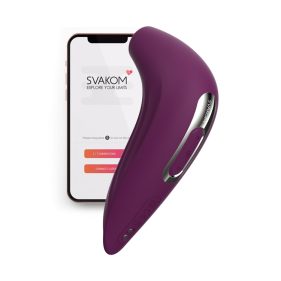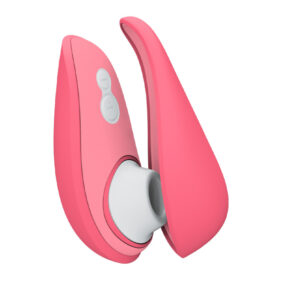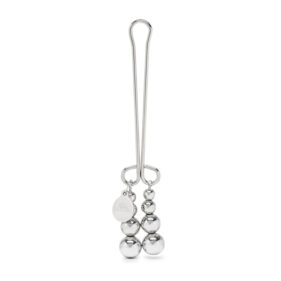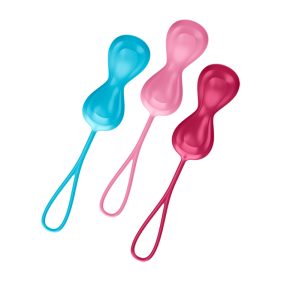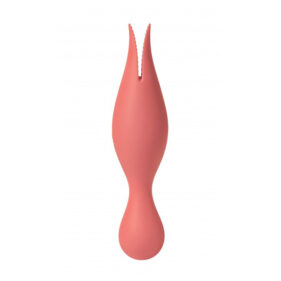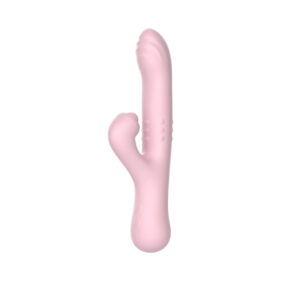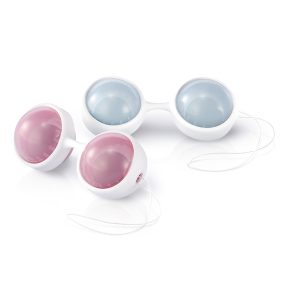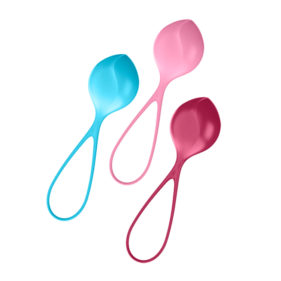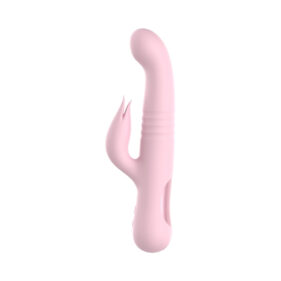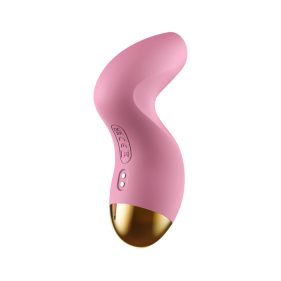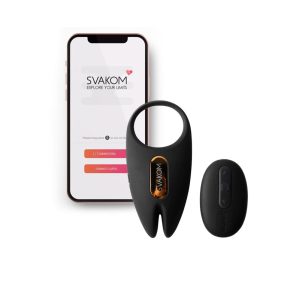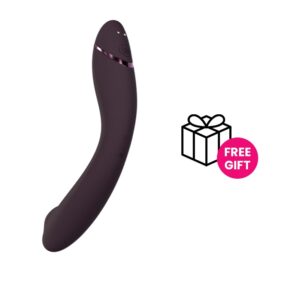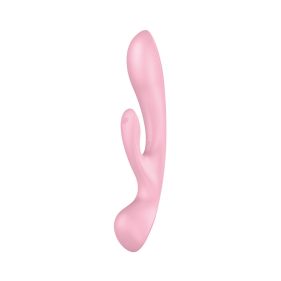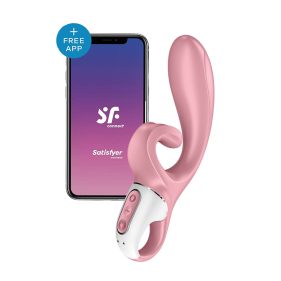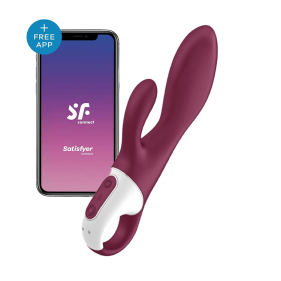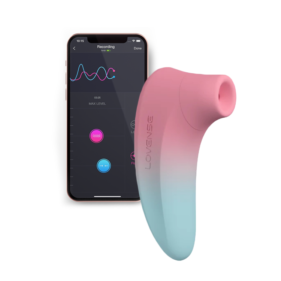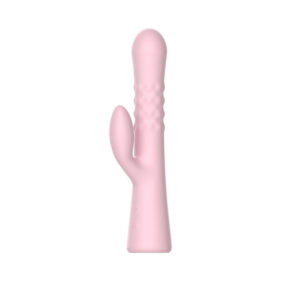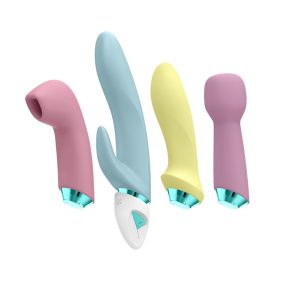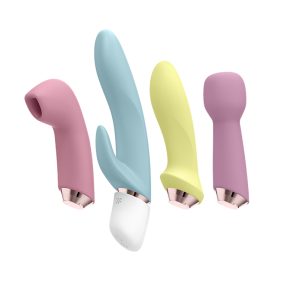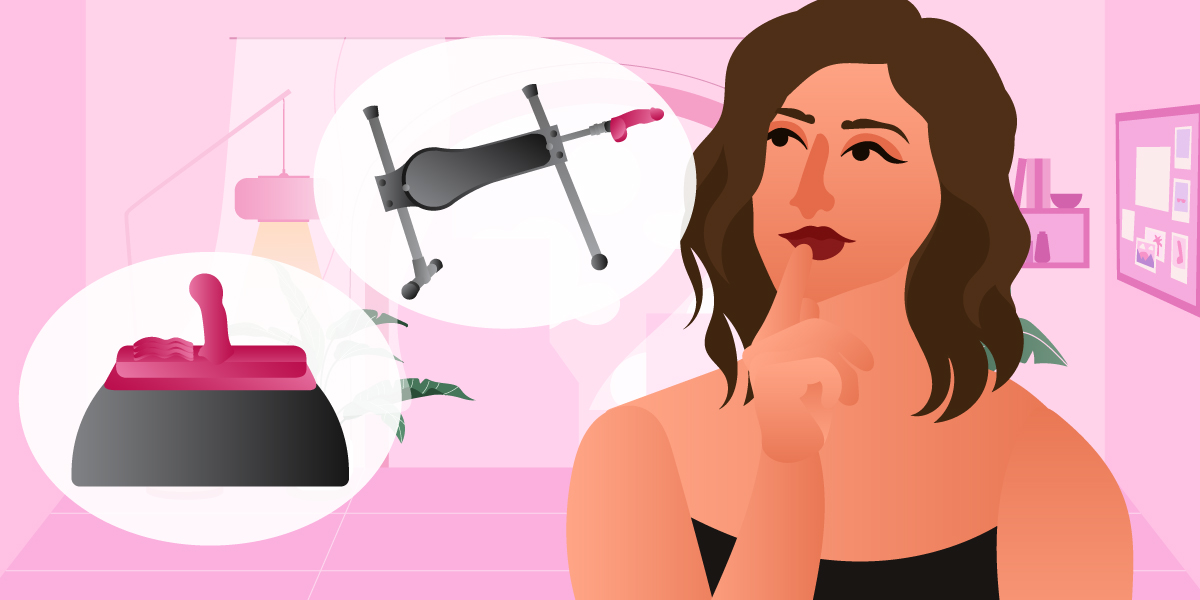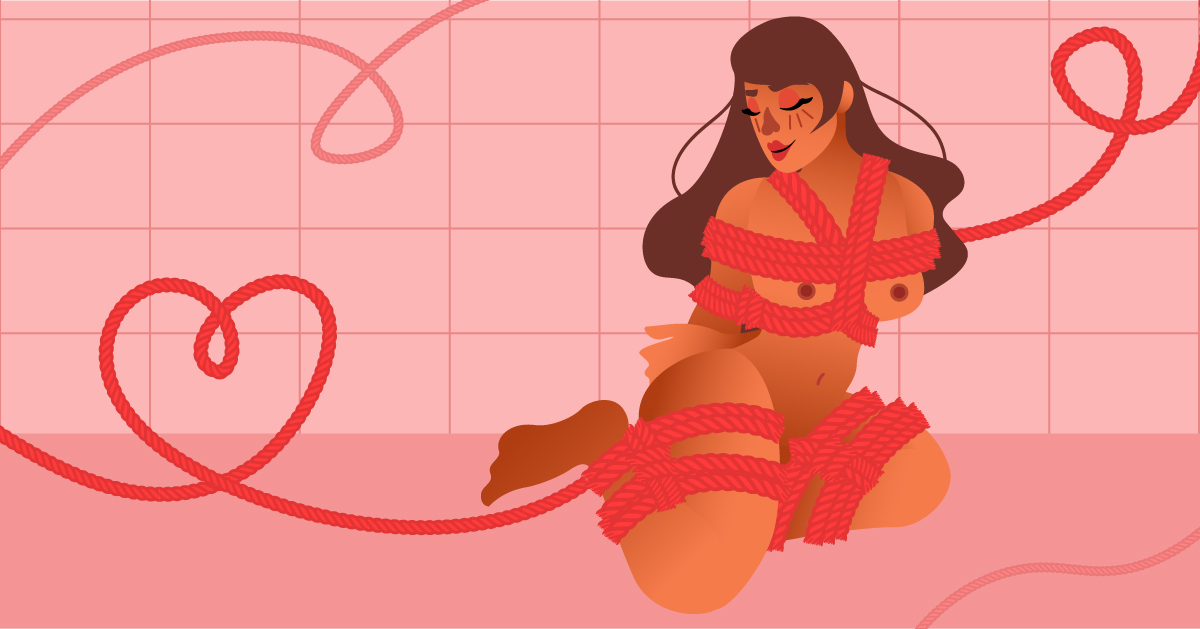
Using the right type of rope for bondage is essential knowledge for any bondage enthusiast. Each type offers a different experience, whether you’re looking for something raw and rough or soft and delicate. Not only that, but different materials require varying maintenance levels, so knowing which ropes need more or less cleanup time can make a big difference.
That’s why, if you’re new to this steamy activity, keep reading! This guide covers factors to consider before buying a rope and explores different types of ropes for bondage.
What is Rope Bondage?
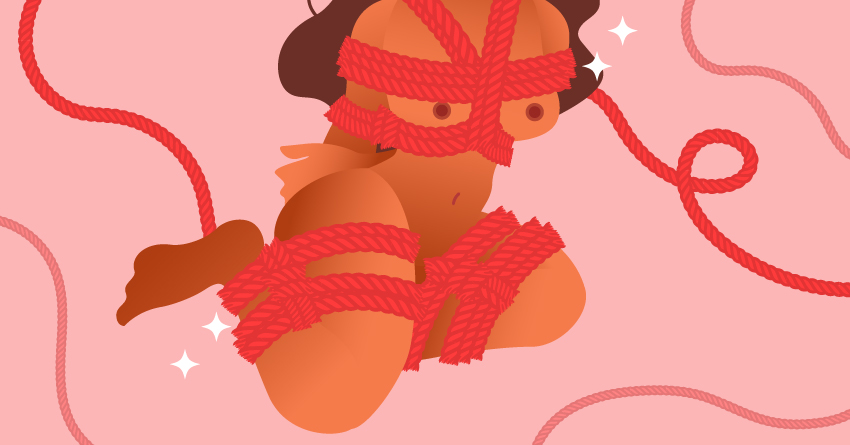
Rope Bondage is a BDSM practice that involves tying someone up for sexual pleasure. The Dominant (also known as Rigger) will tie the Submissive (also known as Rope Bunny) in various knots and positions, making the Rope Bunny vulnerable and helpless. Once the sub is fully tied up, the dominant can do whatever he/she wants– that’s within the agreed terms, of course.
Why has this practice become so popular? You may have thought it’s because of the popularity of the Fifty Shades Trilogy, but no– this BDSM practice has been popular to the BDSM Community ever since.
They love it because of how it strongly establishes the power dynamic between the Dominant and the Submissive. The dominant gets high from taking full control, while the Submissive get aroused from being helpless.
Aside from that, most kinky folks try BDSM plays such as Rope Bondage as an escape to their mundane responsibilities. Because of this, people tend to have lesser stress and anxiety by doing this practice.
Aside from the mental arousal, people are also into this for aesthetic reasons. There’s a seductive charm with a naked body that’s perfectly wrapped in ropes. Some countries like Japan have considered this sensuous activity as an art form, calling it Shibari, and has produced intimate rope bondage shows for a niche audience.
-
₱4,495.00
-
₱5,700.00
-
₱2,695.00
Factors When Looking for the Best Rope for Bondage

Now that you’ve learned about rope bondage and its benefits, let’s move on to the essential factors when looking for the best rope for your play sessions.
Some beginners tend to buy several types of ropes and just randomly pick a rope for their first session—don’t do that! You see, we don’t want you to waste your hard-earned moolah from buying the wrong rope type. You must take some time to communicate with your partner and to research the best rope for your preferred bondage play. With that, before purchasing any bondage rope, consider the following things:
1Preferred Play

Before checking the best rope for bondage play, you need to discuss with your partner the type of bondage plays you’re gonna indulge in. Are you doing this for the ‘gram? Are you doing this along with impact play? Planning to try suspension play? Once you’ve agreed about the type of play, you can now start researching for suitable ropes.
2Diameter

Thickness matters. If you’re just starting with this kinky activity, go for ropes that have a diameter of 5mm or thicker. Avoid using thinner variants because using thin ropes may lead to discomfort due to excess pressure, circulation problems, bruising and etc.
3Texture
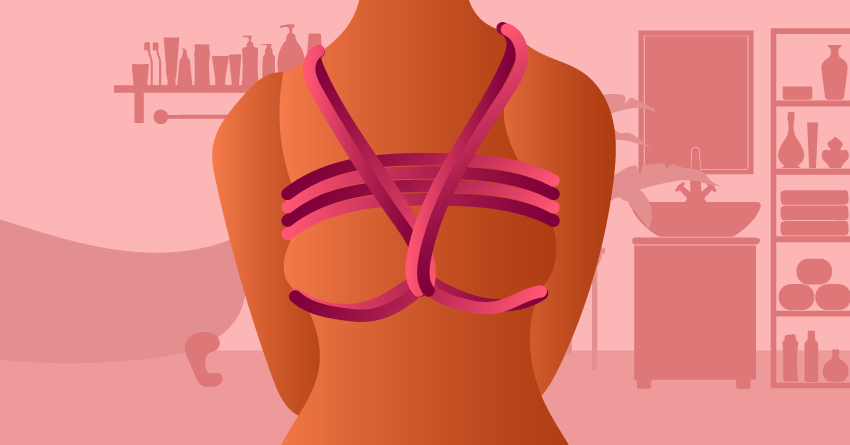
Whether you’re doing rope bondage or other BDSM plays, the submissive’s comfort is always a top priority. That’s why when shopping for rope bondages, choose a rope that has your partner’s preferred texture. You also need to know if your sub is allergic to natural fibers, such as hemp or sisal.
4Stretch
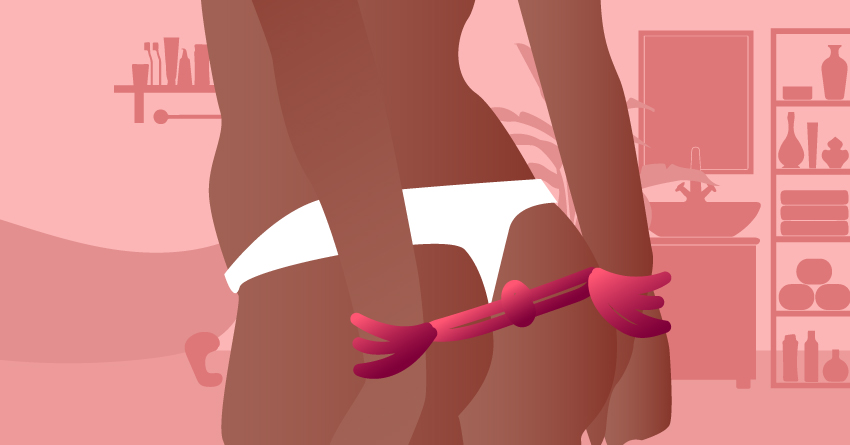
Know how stretchable the rope is. If you’re doing intense bondage plays, avoid going for stretchy ones since it tends to tighten up if pulled intensely, causing discomfort to your sub.
5Braiding
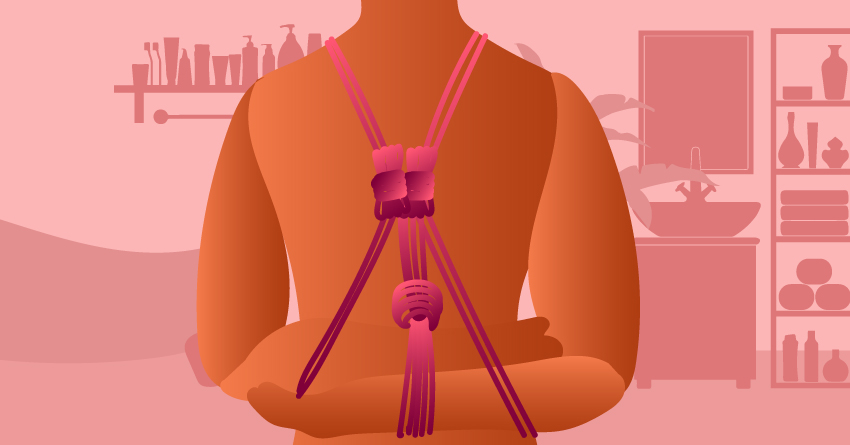
When looking for the best rope for your bondage plays, make sure to check how the rope is woven together. The braiding will affect the tightness of your knots and the difficulty of taking them apart.
6Friction
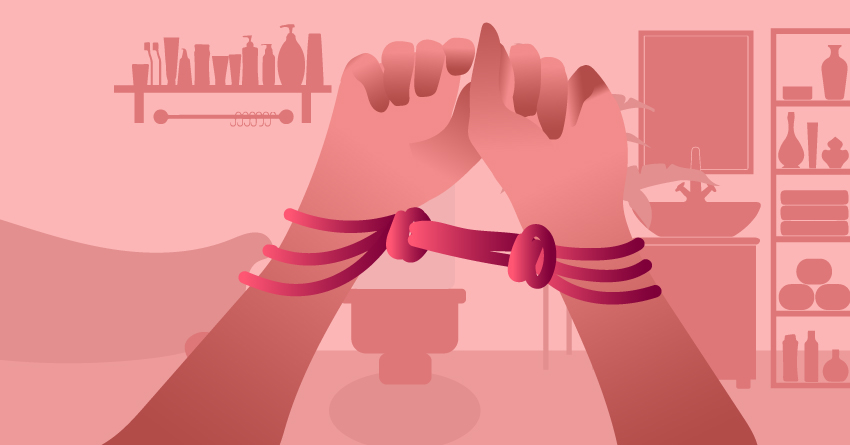
Knowing the friction is a must when dealing with knots. You gotta make sure the knots, twists, and loops will hold together. This is why if you’re doing rope bondage to solely restrain your sub, avoid the low-friction ones since it tends to get loose or tighten.
7Strength

For rope suspension plays, where the submissive is tied and lifted from the ground, you need to make sure that the rope is sturdy enough to hold your sub’s weight. Don’t settle for low-quality ropes or you’ll send your sub to the ER!
8Durability
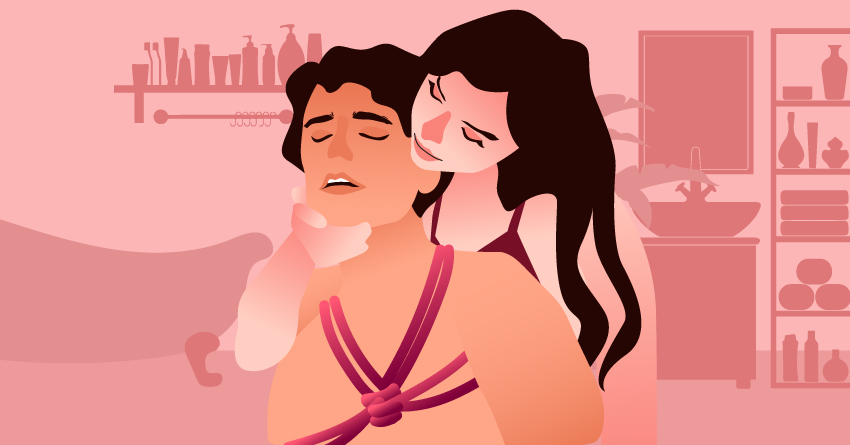
Bondage ropes don’t last forever, but certain types of ropes have a longer life span. If you’re on the budget, invest on more durable types. You also need to keep them properly so that they’ll last longer. (More on that below!)
Types of Rope for Bondage
As you learned about the essential factors when choosing the best rope for bondage, you must be wondering if which ropes have balanced friction, better durability, and smoother texture. Well, look no further! Here are the different Natural and Synthetic ropes and their detailed qualities.
Natural Types
1Hemp
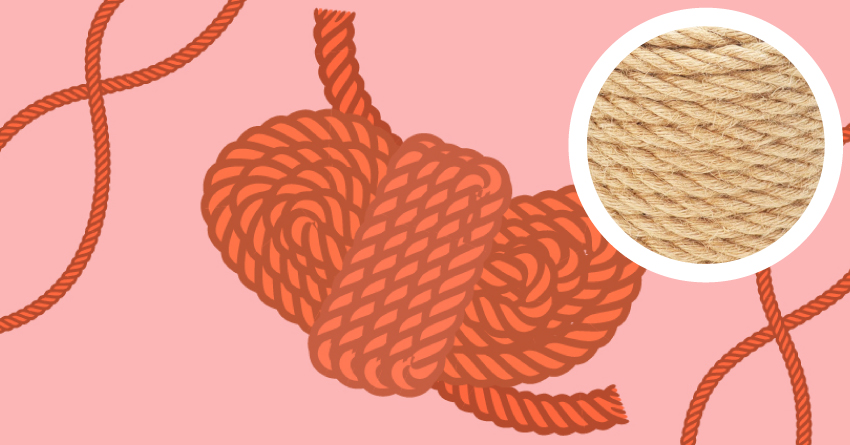
Hemp is a favorite among shibari enthusiasts for its traditional aesthetic that complements shibari. Its friction is excellent, ensuring that knots stay securely in place and have medium strength. Hemp rope also lacks elasticity, meaning it won’t deform under tension—the tightness of twists and knots remains precisely under your control.
As for the cons, hemp rope tends to shed fibers, which can make it feel rougher or itchier for the submissive. You’ll need to condition the rope to give it a smoother feel. Although regular cleaning isn’t usually necessary, the process can take several days if it does need a wash. Also, hemp rope is relatively heavy, which might be a dealbreaker for some dominants who prefer a lighter, more manageable rope.
Clean & Maintenance
Most of the time, you’ll only need to air out your hemp rope after a session, as hemp has natural antimicrobial properties that help resist a wide range of bacteria. However, if the rope comes into contact with bodily fluids such as urine, semen, vaginal discharge, vomit, or blood, you’ll need to do some extra cleaning:
- Unbundle the knots, then place them inside a bucket of cold water.
- Add a small amount of mild detergent, preferably organic or natural. The exact amount will depend on how much rope you’re washing.
- Stir the rope in the soapy water and let it soak for 20 minutes.
- To dry, hang the rope in loose coils until it stops dripping.
- Use a stable object or a friend to stretch the rope tight as it dries. Once it’s barely damp, hang it in loose coils until completely dry—this may take several days, depending on the climate.
- Once the rope is fully dry, you must condition it to keep it in tip-top shape. Some brands recommend applying a specialized oil, while others might require an extensive rope care procedure. This article provides detailed guidance on how to properly condition your rope.
Note: Some brands offer machine-washable hemp ropes, but most aren’t recommended for machine washing as they can damage their structure, strength, and color. If your rope is machine-washable, place it inside a mesh lingerie bag or pillowcase, then set your machine to the delicate cycle.
-
Original price was: ₱4,995.00.₱2,995.00Current price is: ₱2,995.00.
-
₱2,445.00
-
₱3,600.00
-
₱2,695.00
2Linen (Flax)
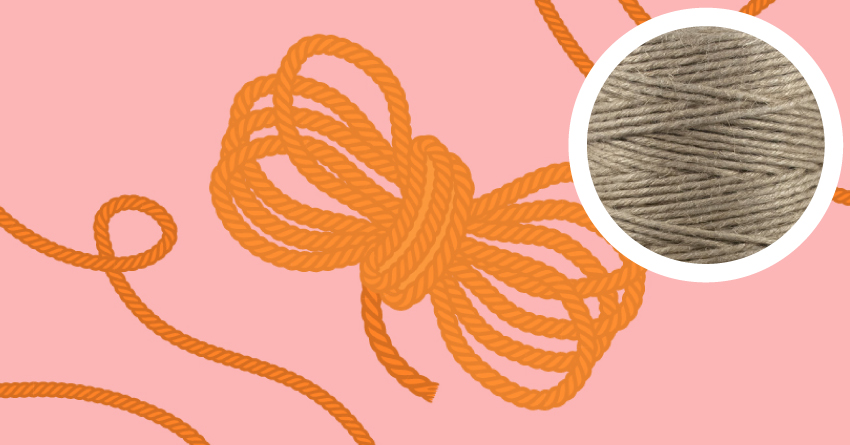
This type of bondage rope is quite similar to hemp but offers a softer feel and lighter weight. It also has good friction and durability is close to hemp, making it a reliable choice.
Clean & Maintenance
There is a limited amount of specific information on cleaning linen rope, but some sources suggest it can be cleaned in a washing machine. Here’s a general guide to follow:
- Untie any knots and place the rope in a bucket filled with cold water. If using a washing machine, put the rope in a lingerie bag, laundry mesh bag, or pillowcase.
- Add a small amount of mild detergent, preferably organic or natural. Adjust the amount based on the quantity of rope you’re washing.
- Soak the rope for at least 20 minutes. If using a washing machine, set it to the delicate cycle.
- To dry it, hang the rope in loose coils until it stops dripping. For machine washing, use an extra spin cycle to remove excess water.
- Stretch the rope with the help of a stable object or a friend as it dries. Once it’s barely damp, hang it in loose coils again until completely dry.
3Jute
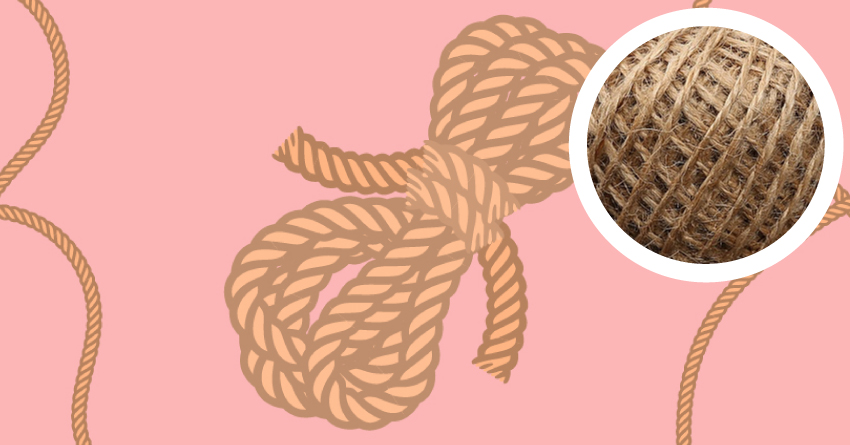
Another popular choice among bondage enthusiasts is jute rope. It’s springier and lighter than hemp and linen, with excellent friction that makes it easy to tie and untie. Its aesthetic is similar to hemp, which is why many shibari enthusiasts favor it alongside hemp. However, jute fibers are rougher and stiffer than hemp.
Maintaining jute rope can be tricky since most sources recommend against washing it, as it tends to degrade when exposed to water. You’ll need to dry it under tension to prevent it from shrinking and thickening unevenly. And while the friction is great for bondage, be aware that it can cause friction burns if moved too quickly over the skin.
Clean & Maintenance
Like hemp and linen ropes, you generally don’t need to wash jute rope in water unless it has come into contact with bodily fluids. The cleaning process is similar but with a few adjustments:
- Untwist the knots and place the rope in cold water with mild detergent. Alternatively, you can use a washing machine on a delicate or gentle cycle, placing the rope inside a pillowcase to prevent loose fibers from damaging the machine.
- Soak the rope for a few minutes, then lightly wash off feces, blood, and other bodily fluids that might be sticking to it.
- Stretch the rope across a room or garden, adding tension by hanging a weight at the midpoint. Then, allow it to air dry.
- Stretch and straighten the rope by pulling it through thick chains or any firm, hard object several times in each direction. This step is crucial to prevent degradation, shrinkage, and uneven thickness.
- Once it’s dried up, de-fuzz and condition the rope— check this guide for detailed instructions.
-
₱2,445.00
-
₱3,995.00
-
₱4,495.00
-
₱12,645.00
4Cotton
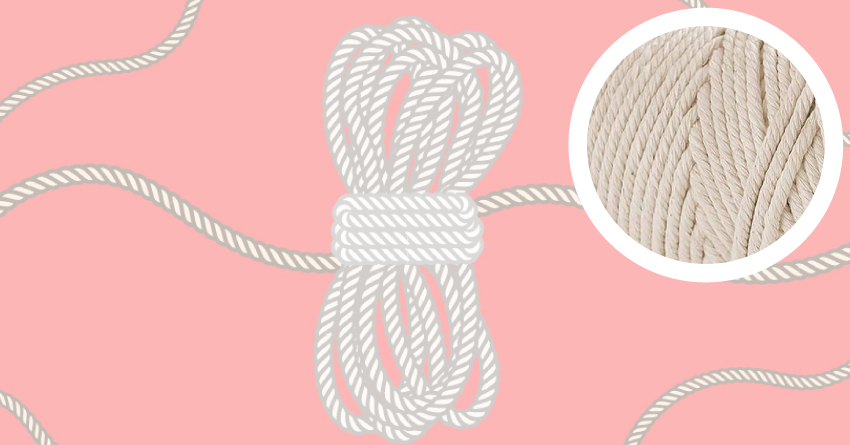
Beginner riggers often prefer this type of rope because it’s less likely to cause rope burns than other options. It has a softer feel than other natural ropes and is lighter and easier to handle, making it great for beginners.
While it’s easy to tie your submissive with this rope, untying can be more challenging. The knots you create can be incredibly compact, sometimes making them difficult to untie. Additionally, this rope tends to stretch over time and has lower strength than previous rope types.
Clean & Maintenance
If your rope doesn’t have any bodily fluids on it, there’s no need for a thorough cleaning like other bondage ropes. Just make sure to air them out after a steamy session. But if you need to scrub off some dirt, here’s a recommended cleaning method:
- For machine washing, chain the ropes and place them in a laundry bag or pillowcase. Put the chained ropes in a bucket of cold water for handwashing, and use a mild detergent.
- Let the rope soak for as long as needed, then lightly scrub off any dirt before rinsing thoroughly.
- When drying cotton ropes manually, lightly squeeze them with a towel and lay them out to dry. Avoid wringing or stretching the ropes vigorously.
- Unlike the prior types, you don’t need to add oils or condition this rope.
5Silk
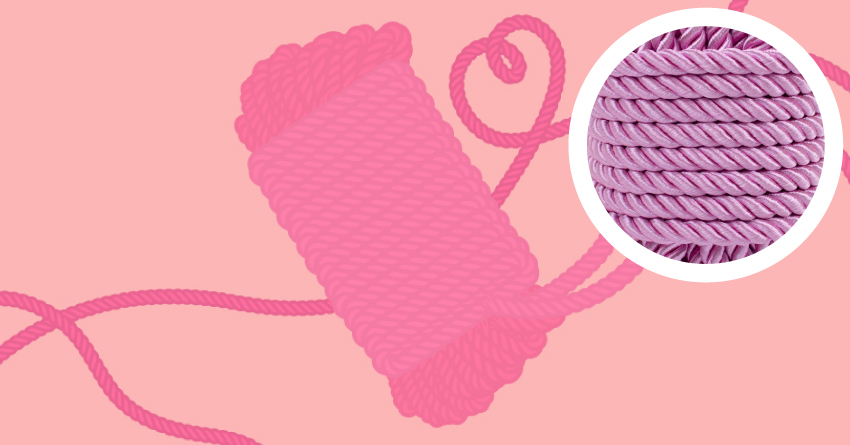
Silk rope looks stunning in photos and is much softer than other rope types. However, it does come with some drawbacks. First, it has low friction, meaning it doesn’t hold knots well. In some cases, it’s hard to untie, so having a pair of safety scissors nearby is essential when using this rope.
Not only that, but this type is on the pricier side, so be prepared to splurge a bit if you want to add this luxurious rope to your bondage stash.
Clean & Maintenance
- You can wash it by hand or in the machine. For machine washing, put the ropes inside a laundry bag or pillowcase. If you’re handwashing, submerge the ropes in cold water and use a mild detergent.
- Allow the ropes to soak thoroughly, then gently scrub off any dirt before giving them a good rinse. For machine washing, please set the machine to a delicate or gentle cycle.
- When drying, lightly press the ropes with a towel to remove excess water, then hang them dry in loose coils. They may require gentle stretching during the drying period to maintain the proper lay of the rope. No need to apply any oils for conditioning.
6Bamboo
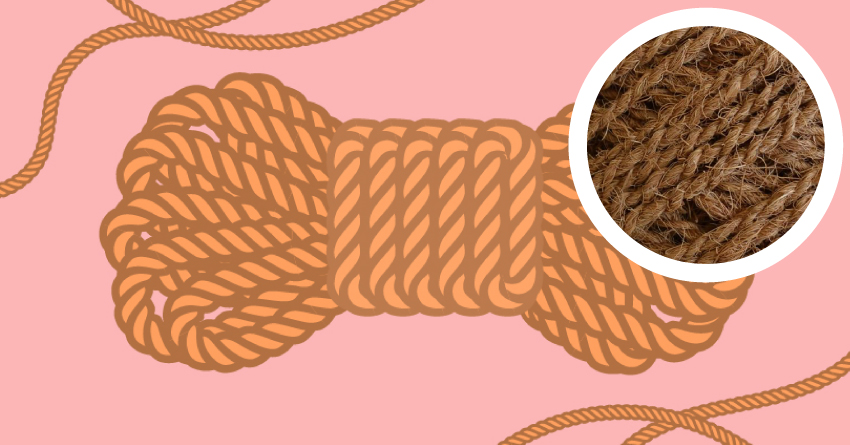
Ropeconnections.com describes bamboo rope as “like the lingerie of rope.” It has an alluring sheen and a soft texture, making it gentle on the skin and unlikely to cause rope burn. It also has moderate friction, making it easy to handle and work with.
However, it’s also pricier and quite delicate, so you’ll need extra care when cleaning it to maintain its quality.
Clean & Maintenance
Due to its delicate nature, it’s best to avoid frequent washing and simply air dry the rope after each session. However, it will need some deep cleaning if it comes into contact with bodily fluids or dirt. Here’s how to do it:
- Wash by hand with cold water and mild detergent. Soak them for at least 20 minutes.
- Gently squeeze out the water, then hang them dry in loose coils.
- Stretch the rope as you dry them out to keep them in shape. Similar to the previous type, this rope doesn’t need oils for conditioning.
-
₱4,745.00
-
₱1,995.00
-
₱5,395.00
-
₱4,745.00
7Coir, Manila, Sisal
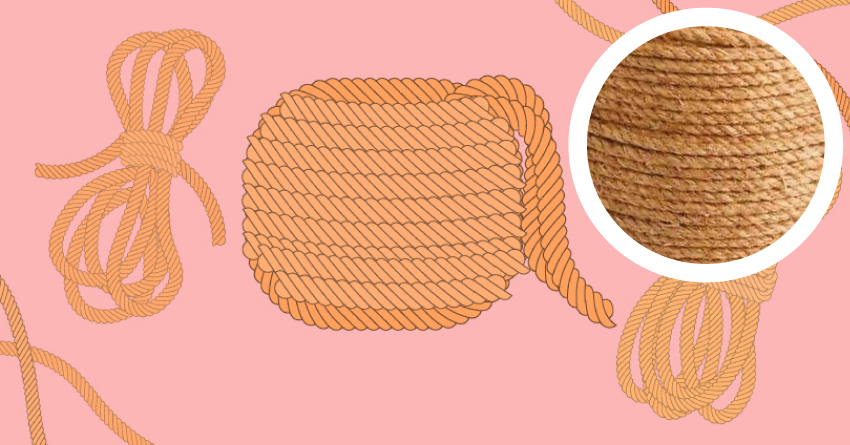
These rope types leave more noticeable rope marks, and aren’t strong enough for suspension play. They’re ideal for more advanced, sadistic play sessions. So, if your sub enjoys rougher play, this type might be worth considering. Otherwise, it would help if you stuck with the other options.
Clean & Maintenance
Due to their rough texture, these ropes aren’t ideal for frequent washing. However, if you need to clean them, here’s a general guide:
- Fill a bucket with cold water and add a mild detergent. Soak the rope for as long as needed.
- Use a scrub brush to remove feces, blood, or other bodily fluids. Rinse thoroughly.
- Air-dry the rope by hanging it in loose coils.
- There’s limited information on conditioning this type of rope, but using a specialized rope oil can help extend its lifespan. Check out this guide for recommendations on suitable oils.
Synthetic Types
8Nylon (Polyester, Paracord)
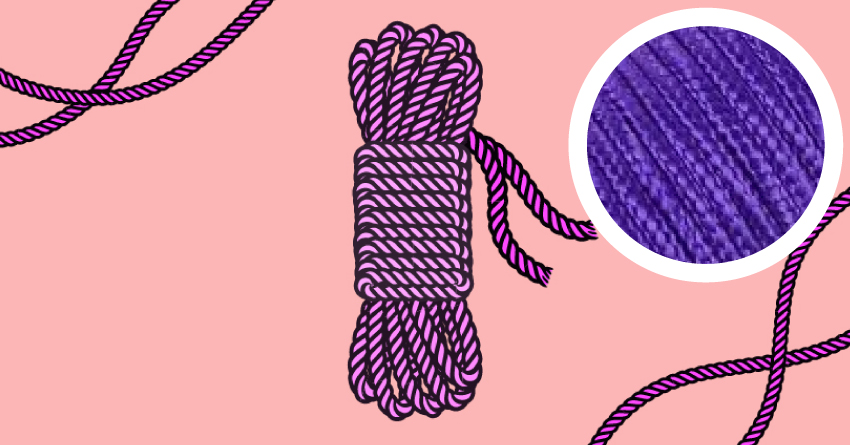
Nylon rope isn’t traditionally used in shibari, but it’s popular among those who enjoy modern twists in their bondage sessions. Its softness, vibrant colors, flexibility, minimal risk of rope burn, and easy maintenance make it a favorite. Nylon ropes are also incredibly strong and can be dyed for a more colorful touch.
However, nylon ropes have downsides. They offer less friction than natural ropes, which means knots may not hold as securely. Sometimes, the knots may be too compact and hard to unbundle, so make sure your safety scissors are within reach.
Clean & Maintenance
If there’s only a small amount of bodily fluid or dirt on the rope, a damp cloth should suffice to clean it. For heavier soiling, follow these steps:
- Knot the rope first for those using a washing machine to prevent tangling.
- If you’re handwashing, submerge the ropes in a bucket of cold water with a mild detergent. Keep it on for at least 20 minutes. Those using the machine should put the knotted ropes in a laundry mesh bag or pillowcase and put them in the washer.
- Use the shortest and gentlest cycle with cold water and mild detergent for the washing machine. If you’re handwashing it, gently scrub the excess dirt from the rope (if there’s any), then rinse it off.
- After the cycle, you can use a dryer on a no-heat delicate or air-fluff setting. Dry for two cycles (about 30-40 minutes). Alternatively, you can air dry the rope, though this will take longer.
-
₱7,508.00
-
₱2,445.00
-
Original price was: ₱8,095.00.₱7,285.50Current price is: ₱7,285.50.
-
₱8,095.00
9Synthetic Hemp (Hempex)
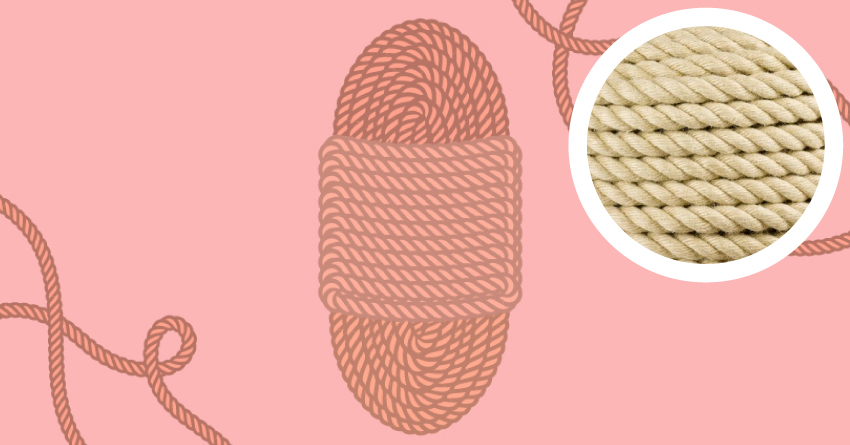
If you love the look and feel of hemp but want to avoid its shedding or high cost, synthetic hemp might be the perfect alternative. It offers good friction, comparable to traditional hemp— though hemp still has a slight edge in this regard.
However, it doesn’t fully replicate the tactile experience of genuine hemp, so keep your expectations in check when using this type of bondage rope.
Clean & Maintenance
Since synthetic hemp serves as an alternative to traditional hemp, its cleaning process is quite similar. For detailed instructions on how to clean this rope type, please refer to the hemp cleaning section above. The same principles apply, so you can easily adapt the methods for synthetic hemp.
10Multifilament Polypropylene (MFP)
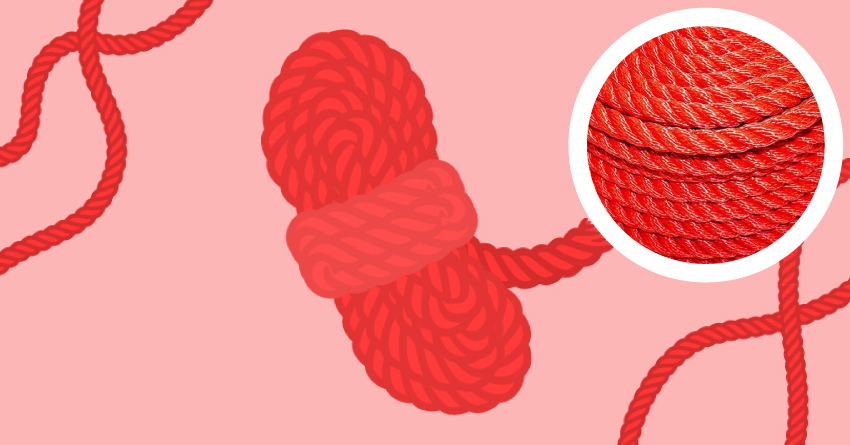
If you’re into decorative rope bondage, Multifilament Polypropylene (MFP) ropes might be a great option. Unlike traditional ropes, they don’t create bulky knots, making them ideal for intricate and visually appealing ties. They also come in a wide range of colors, allowing you to match them with your aesthetic preferences.
Two popular types of synthetic ropes are Polypropylene Webbing and Polypropylene Braid. Polypropylene Webbing features a core that provides stiffness. However, if you remove the core, it can still be used effectively for bondage, as suggested by Pete Riggs from ropeconnections.com. On the other hand, polypropylene braids are softer since they don’t come with a core.
Both types offer easy handling and visual appeal, but they might not provide the same knot-holding capability as natural ropes.
Clean & Maintenance
The cleaning and maintenance instructions for this type of rope are similar to those for nylon ropes. For detailed steps, please refer to the instructions provided above.
How to Cut Bondage Ropes

Before you exclaim that you don’t need a guide on how to cut your bondage ropes, we didn’t have this section to solely guide you on the cutting process. We’re here to share with you the lengths you should be cutting per particular bondage activity. Cutting your ropes is an essential pre-game step. You don’t want to fumble around just to measure ropes and cutting them within the play session.
With that, have your medical-grade scissors ready and read away!
- 1 Meter: Used for simpler ties that requires minimal knots.
- 2.5 Meters: Used for upper body ties such as cuff-tie on wrist or ankle.
- 5 Meters: For extensive upper body or lower body ties such as crotch rope.
- 7.5 Meters: The traditional length for Japanese Bondage. Used for simpler full-body ties.
- 10 Meters: Standard length for full body types.
- 15 Meters: Used for complex, full-body ties.
- Beyond 15 Meters: It’s too long for practical use but is suitable for specific bondage techniques, such as the mummification technique.
Takeaway
As we end this comprehensive guide, we hope that you’ve learned all about the different types of ropes for bondage plays. We also hope that you’ve found the best ones from the bunch that will kickstart your kinky journey.
Just with other sexual activities, communication and preparation is the key! Don’t just pick the next pretty rope that you’ll find online. Know what your sub likes then start from there. So go ahead, pick your rope and start playing!
Disclaimer: This guide provides a general overview based on various sources, including ropeconnections.com, ropestudy.com, and offline resources. For specific inquiries about bondage ropes, consider consulting an experienced rigger or rope bunny. You can also experiment with different materials to see what works best for you and your partner. Overall, the best type of rope for bondage is the one that aligns with your comfort and preferences.
